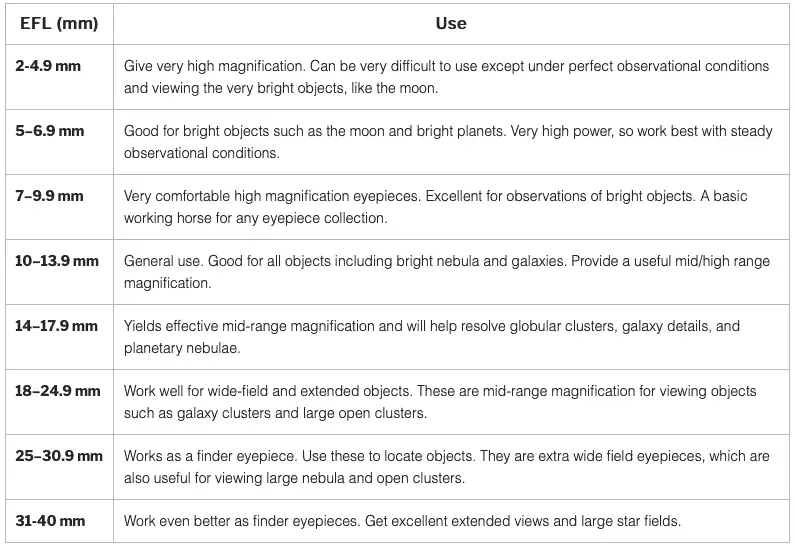It’s fun looking at the Moon through telescope or binoculars lenses. But what about the planets? How well can you see these? This article covers what you get to see of the planets and what to know in viewing planets through a telescope.
With a good hobbyist telescope, you’ll see the special features that distinguish the planets. The rings of Saturn and the bands of Jupiter are visible, for example, with a backyard telescope.
What to know of Viewing planets through a telescope
From my experience the best planets to observe are Jupiter and Saturn. You can try and identify Jupiter’s moons — I have an article on this. These move around the planet and are worth noting.
The different cloud bands and the possibility of seeing the red spot of Jupiter add intrigue.
Observing Saturn and its rings and how the angle of these change over time is something worth encountering.
The tricky part for a newbie is getting acquainted with the sky.
What you’ll see (with unaided eyes) is that the sky is full of stars (where are the planets?) and through a telescope there are many more stars — the constellations you’ve known from peering at the night sky (maybe not if you are a city dweller) will look different.
This can be confusing. It threw me, at first. The sky looked different through the telescope compared with my unaided eyes and I admit, I was disorientated.
I’ve since discovered how to optimize planetary viewing and have written this article: Maximizing Your View: Essential Tips for Planetary Observation, to help others starting out.
Path of the planets in our night sky
It’s worth knowing the movement of planets across our night sky.
The planets orbit the Sun — See my glossary item: the Solar System planets, for info on their orbits, distance from Earth, and more about on the planets seen from Earth — but for us looking from Earth, they move across the night sky like our Sun and Moon does, i.e. from east to west.
If you establish where your east and west lie, you then have some idea of the trajectory on which they might lie when looking.
Read also: The Best Telescopes For Viewing Planets (for recreational users)
Planets through a telescope expectation vs actual
Don’t expect to see images of the planets through your telescope or binoculars similar to those presented by NASA. The latter arise from more sophisticated technology and are color enhanced.
The help of eyepieces in viewing planets through telescope
When looking at planets through a telescope, having the right eyepiece helps with seeing their features. The following is a guide on the eyepiece size and use.

Read also: My article on What Are The Best Telescope Eyepieces
Can you see planets without a telescope?
Yes, you can see planets without a telescope. Most planets of the Solar System are visible to the naked eye. They will look like stars (though, if you can pick it up, they don’t twinkle like a star).
Some standout because of their brightness. Venus, known as the ‘evening star’ or ‘morning star’, is easy to spot for this reason.
Can you see planets through binoculars very well?
You can get close up views of planets of our Solar System through binoculars and see special features such as the moons of Jupiter. The trick with binoculars is to have a pair lightweight enough to remain steady yet powerful enough for decent views. If you’ve ever tried turning a decent-sized set of binoculars skyward, you’ll know what I mean (unavoidable shaking happens). More on how to remedy that below.
How to keep astronomy binoculars steady
If you’re looking at planets through binoculars, try stabilizing them on a tripod or some other way. You could steady your arms on a fence, table, or the roof of your vehicle. Terence Dickinson suggests lying back on an inflatable pool bed.
Maps & charts for finding planets
According to time and place…
Star maps are most helpful for finding planets in the night sky. Hard copy star maps can be downloaded from space sites. Digital apps on your phone or tablet are another way. These include Star Walk, Sky Guide, and Google Sky Map.
Other online sources…
- Globe at Night: globeatnight.org
- Star Date: stardate.org
FAQs
How to find Saturn with a telescope
At certain times of the year, it will be easier to find Saturn in the sky than at other times. With Saturn in opposition, for example, it will be more predominant in the sky and can be seen most of the night.
I cover this in my article on how to see Saturn from your backyard. I also cover Jupiter in my article on Viewing Jupiter Through a Telescope.
Read also: What Can You See Through a Home Telescope
Can you see Uranus from Earth?
You can’t see Uranus with the naked eye. You can see Uranus from Earth using a telescope. However, both Uranus and Neptune appear as specks of planets through a telescope of the type used by amateurs.
Can I see Neptune with a telescope?
You can see Neptune with a telescope just like Uranus. But when looking at these planets through a telescope of the type used by amateurs they will appear as small discs with no strong distinguishing features.Info sources
NASA: Planetary Fact Sheet | Terence Dickinson: NightWatch
